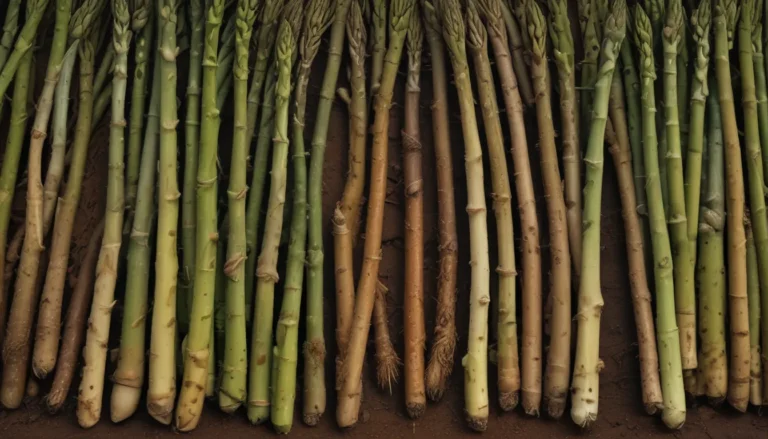Ultimate Guide: How to Plant and Grow Lingonberries

Do you want to bring a taste of Scandinavia and Russia into your own backyard? Lingonberries might be the perfect addition to your garden. These small, tart berries are often enjoyed in jam form, but there is nothing quite like growing your own and experiencing the full complexity of their flavor profile.
If you’re new to lingonberries or just looking to expand your gardening knowledge, you’re in the right place. In this comprehensive guide, we will explore everything you need to know to successfully plant and grow these delicious berries, from cultivation and history to harvesting and preserving.
What Is a Lingonberry?
Before diving into the specifics of growing lingonberries, let’s understand a bit more about these unique fruits. Lingonberries are divided into two main varieties: the North American or wild lingonberry (Vaccinium vitis-idaea var. minus) and the European or cultivated lingonberry (V. vitis-ideae var. vitis-idaea). These evergreen ground cover plants are closely related to heath and heather plants and are known by various names including cowberry, mountain cranberry, redberry, or partridgeberry.
While wild lingonberries typically stay small and low to the ground, cultivated varieties can grow up to twice as tall and wide. These plants produce small red berries with a tart, acidic flavor that can become sweeter if left on the plant after a freeze.
Cultivation and History
Lingonberries have a long history of cultivation in Europe, dating back to at least the Middle Ages. However, they remain relatively uncommon in cultivation today, with limited production primarily in regions like the Pacific Northwest, Scandinavia, and Russia. Indigenous peoples in North America relied on wild lingonberries as a winter food source due to their ability to dry and store the berries for later use.
Lingonberry Plant Propagation
If you’re looking to grow lingonberries in your own garden, there are several methods of plant propagation to consider. Lingonberries can be easily propagated through stem cuttings, rhizome divisions, and transplants.
- From Stem Cuttings: Select a young growth stem in early spring, remove any leaves, and place it in a container filled with potting soil. Keep the cutting moist and wait for new growth to appear.
- From Rhizome Divisions: Dig up a portion of the plant’s rhizome, separate it from the parent plant, and replant the divisions in new locations.
- From Transplants: Plant lingonberry transplants in well-prepared soil in the spring after the last frost date, ensuring they are positioned at the same height as before.
By using these propagation methods, you can easily expand your lingonberry patch and enjoy a bountiful harvest in the future.
How to Grow Lingonberry Bushes
Growing lingonberries requires a few key considerations to ensure success. These plants thrive in cool regions, preferring full sun to partial shade and acidic, well-draining soil with consistent moisture. Avoid overwatering and ensure the roots do not sit in water for extended periods, as this can lead to root rot.
- Growing Tips: Plant lingonberries in full to partial sun, keep the soil consistently moist but not soggy, and feed only if necessary based on plant growth and soil conditions.
Pruning and maintenance are essential for lingonberries, with minimal pruning in the early years and regular weeding to prevent competition from other plants. Additionally, selecting the right cultivar is crucial for optimal production and pollination.
Lingonberry Cultivars to Select
Several lingonberry cultivars are available, each with unique characteristics and growth habits. Popular options like Ammerland, Entsegan, and Ida offer different sizes, flavors, and production levels to suit your preferences. When choosing a cultivar, consider factors such as fruit yield, size, and flavor to ensure a successful harvest.
Managing Pests and Disease
While lingonberries are relatively pest and disease-resistant, root rot can be a common issue if the plants are exposed to excessive moisture. To prevent root rot, ensure proper drainage and avoid overwatering. Treat affected plants with appropriate fungicides like Mycostop to combat root rot and promote plant health.
Harvesting Lingonberries
Lingonberries produce two harvests each year in some regions, with fruits ready for picking when they are dark red and firm. Use a blueberry rake or hand-pick the berries for fresh consumption or preservation. Lingonberries can be dried, turned into fruit leather, pickled, or made into jams and jellies for long-term storage.
Recipes and Cooking Ideas
Lingonberries are versatile fruits that can be used in a variety of culinary applications. From jams and jellies to sauces and relishes, there are endless possibilities for incorporating these tangy berries into your cooking. Experiment with different flavor combinations and recipes to discover new ways to enjoy lingonberries in your meals.
Quick Reference Growing Guide
To help you get started with planting and growing lingonberries, refer to this quick reference guide for essential information on light requirements, soil conditions, maintenance tasks, and more. Use this guide as a handy tool to ensure your lingonberry plants thrive in your garden.
Light Up Your Garden with Lingonberries
In conclusion, adding lingonberries to your garden can provide not only beautiful ground cover but also delicious fruits for culinary creations. Whether you’re a seasoned gardener or just starting, growing lingonberries can be a rewarding experience. Share your plans for using these plants and let us know how you plan to incorporate lingonberries into your garden and kitchen. For more berry-growing tips, check out our guides on growing boysenberries, gooseberries, and raspberries for a diverse fruit harvest in your garden.
By following the tips and information outlined in this guide, you can successfully plant and grow lingonberries in your own backyard. Enjoy the unique flavors and beauty of this versatile fruiting shrub in your garden today.





